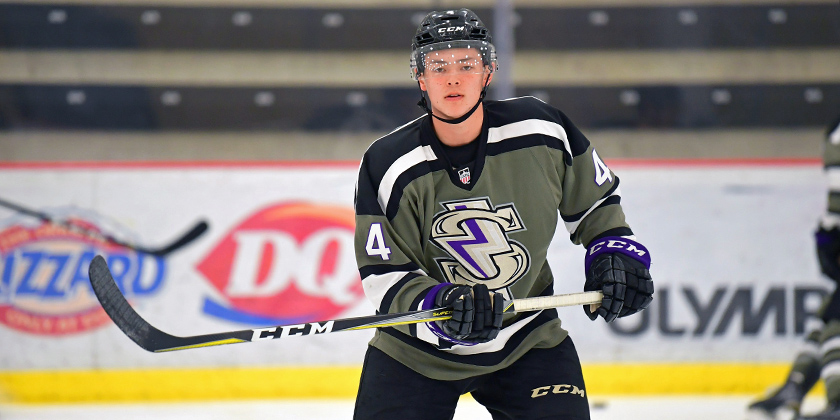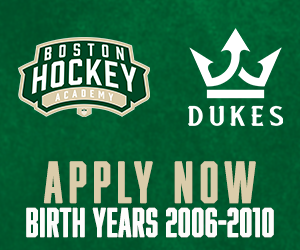Neutral Zone released its rankings of the top 600 NCAA-Eligible, 1998-born prospects. While the actual rankings are for subscribers only, we compiled basic analytics describing the players’ positions, leagues and commitment statistics. The most interesting is the star rating, which shows how players have progressed, regressed or stayed the same, and how many new players have come onto the list in the past year.
Position Data:
This is roughly the breakdown of players by position on any team in college hockey.
| Position | # | % |
| Forwards | 372 | 62% |
| Defense | 174 | 29% |
| Goalies | 54 | 9% |
League Data:
We broke down the Top 600 into four categories: 1-150, 1-300, 1-450 and 1-600 to see the differences in league strength. The USHL and BCHL represent 79 percent of the top 150, but 39 percent in the entire 600.
| Leagues | Top 150 | % | Top 300 | % | Top 450 | % | Top 600 | % |
| AJHL | 6 | 4.0% | 19 | 6.3% | 53 | 11.8% | 75 | 12.5% |
| BCHL | 40 | 26.7% | 74 | 24.7% | 93 | 20.7% | 108 | 18.0% |
| CCHL | 6 | 4.0% | 9 | 3.0% | 21 | 4.7% | 40 | 6.7% |
| GOJHL | 0 | 0.0% | 0 | 0.0% | 1 | 0.2% | 7 | 1.2% |
| MJHL | 0 | 0.0% | 5 | 1.7% | 8 | 1.8% | 14 | 2.3% |
| NA3HL | 0 | 0.0% | 0 | 0.0% | 0 | 0.0% | 1 | 0.2% |
| NAHL | 13 | 8.7% | 44 | 14.7% | 84 | 18.7% | 128 | 21.3% |
| NCDC | 6 | 4.0% | 12 | 4.0% | 24 | 5.3% | 35 | 5.8% |
| NE Prep | 0 | 0.0% | 2 | 0.7% | 5 | 1.1% | 7 | 1.2% |
| OJHL | 1 | 0.7% | 13 | 4.3% | 24 | 5.3% | 35 | 5.8% |
| SJHL | 0 | 0.0% | 3 | 1.0% | 16 | 3.6% | 28 | 4.7% |
| USHL | 78 | 52.0% | 119 | 39.7% | 121 | 26.9% | 122 | 20.3% |
Commitment Statistics:
Below we have a breakdown of the percentage of ranked players committed to Division I and Division III.
| Top 100 | % | Top 200 | % | Top 300 | % | |
| NCAA D1 | 85 | 85.0% | 151 | 75.5% | 196 | 65.3% |
| NCAA D2/D3 | 0 | 0.0% | 0 | 0.0% | 0 | 0.0% |
| Uncommitted | 15 | 15.0% | 49 | 24.5% | 104 | 34.7% |
| Top 400 | % | Top 500 | % | Top 600 | % | |
| NCAA D1 | 206 | 51.5% | 206 | 41.2% | 206 | 34.3% |
| NCAA D2/D3 | 2 | 0.5% | 4 | 0.8% | 6 | 1.0% |
| Uncommitted | 192 | 48.0% | 290 | 58.0% | 388 | 64.7% |
The top 100 prospects have 85 percent of its players committed to Division I. In the top 200 it falls to 75 percent because 65 percent of players ranked 101-200 are Division I commitments. That number fell to 45 percent in rankings 201-300. Only 10 of the prospects ranked 301-400 were committed to Division I, and none from 400-600.
This means the top 300 prospects are Division I caliber players, while 300-600 are Division III.
“The biggest question these 19-year-old uncommitted prospects face is whether to commit to Division III now or try another year of juniors to see if they can play Division I,” Director of U.S. Scouting Brian Murphy said. “We wanted to see how these prospects changed from 18-year-olds to now, and how they improved or regressed.”
Top 600 Star Ratings Comparison from March 2017 to March 2018
Below we looked at star ratings of players one year ago and compared them to current star ratings. The negative numbers represent a decrease in star rating from last year to this year. Players with -0.25, for example, lost .25 on their star rating over the year. Similarly, positive numbers represent an increase in star rating. “NR” signifies players who were not ranked last year.
| Top 600 | # | % |
| -1 | 0 | 0.0% |
| -0.75 | 2 | 0.3% |
| -0.5 | 8 | 1.3% |
| -0.25 | 46 | 7.7% |
| 0 | 222 | 37.0% |
| 0.25 | 114 | 19.0% |
| 0.5 | 33 | 5.5% |
| 0.75 | 8 | 1.3% |
| 1.0+ | 0 | 0.0% |
| NR | 167 | 27.8% |
When looking at this list, keep in mind that some of the top-ranked ’98 players on last year’s list are already playing college hockey, leaving space for other prospects to move up in the rankings.
Very few prospects regressed over the year. The largest group, 37 percent, of players showed no movement in star rating. The 27 percent of prospects who were not ranked last year are considered late bloomers and is comprised of first-time junior players and Europeans playing their first season in North America.
This chart shows that 64.8 percent of players either stayed the same or increased their star rating by .025, and that another 19 percent came from outside the rankings. This shows that very few prospects either improve tremendously (.50 or higher) or regress.
To view the 1998 rankings, you can click here
Photo Credit: Hickling Images





